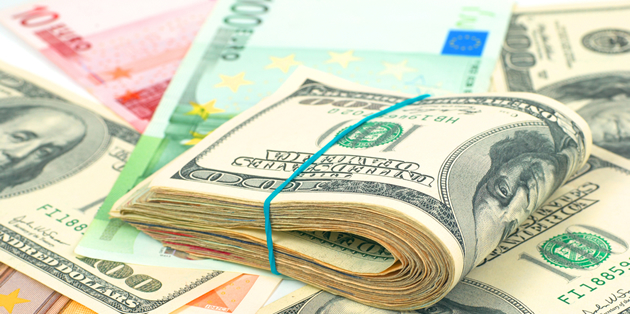The Pound Euro exchange rate has extended losses on Thursday with demand for the British currency remaining severely limited. However, the GBP USD exchange rate has benefitted from the weakness of the ‘Greenback’, making gains as investors dialed back the odds of the Federal Reserve opting to raise interest rates before the end of the year. Some industry experts had previously been anticipating a rate adjustment in September.
- BoE long-dated gilt auction disappointed expectations – Pound weighed down by doubts over effectiveness of easing measures
- Lack of EU sanctions for Spain and Portugal boosted Euro – Single currency strengthened despite concerns over unbalanced economic recovery
- US Dollar weakened after productivity data reduced odds of imminent Fed tightening – Rising risk appetite undermined demand further
- Weak UK Construction Output figures forecast to dent GBP exchange rates – Signs of slowness expected to exacerbate Brexit-based concerns
Worries over the outlook of the UK economy have continued to weigh on the GBP exchange rates, despite the Bank of England (BoE) launching its first round of quantitative easing measures.
Doubts over BoE Easing Measures Renewed Downside Pressure on the Pound (GBP)
News that the Bank of England (BoE) had failed to find the full 1.17 billion Pounds (GBP) of long-dated gilts it was aiming to buy at its first post-Brexit reverse auction did not encourage investors. Although this seemed to boost the chances of the government implementing more substantial fiscal policy measures in order to support the domestic economy that prospect was not enough to boost Sterling. With sentiment still weighed down by Brexit-based uncertainty and nothing in the way of positive domestic data to support demand the Pound slipped lower against its rivals.
Friday’s Construction Output data is unlikely to offer a rallying point for the beleaguered currency, with forecasts pointing towards a further contraction in productivity in June. If ecostats continue to point towards weakness in the run-up to the EU referendum then hopes for the economy to weather the impact of recent volatility are likely to dim further. Should the result surprise to the upside then the Pound could find some support, although any positive impact could be muted by the fact that it pertains to the pre-Brexit economy.
Stronger Eurozone GDP Forecast to Weaken the GBP EUR Exchange Rate
Markets were relieved by the final confirmation that the EU will not be sanctioning Spain and Portugal with regards to their breach of deficit guidelines. With fresh targets being drawn up for the two countries the implication seemed to be positive, in spite of the fact that the recovery of the Eurozone remains lopsided. This prompted the Euro (EUR) to trend higher across the board, with the single currency also benefitting from the relative weakness of the US Dollar (USD).
With a light data day on Thursday the common currency is likely to lose some of its momentum, particularly as investors prepare for the raft of second quarter Eurozone GDP data. Germany is expected to show further strength with a robust pace of economic growth on the year, although other member states are unlikely to have fared as well. If the overall Eurozone measure shows improvement, however, the Pound to Euro (GBP EUR) exchange rate could extend its downtrend further.
US Dollar (USD) Falls out of Favour as Odds of 2016 Fed Rate Hike Decline
Confidence in the ‘Greenback’ slumped sharply on Wednesday in the absence of particularly impactful domestic data, trending lower across the board as its earlier bull run came to an end. The odds of the Federal Reserve opting to raise interest rates before the end of the year seemed to diminish, especially given the increasing risk associated with the presidential election. As global headwinds remaining negative the case for imminent easing appears less convincing, with researchers at RBC Economics noted:
‘With growth of just 1.0% in H1/16, we expect some of the more dovish Committee members will continue to favour a defensive stance, leaving rates steady until signs of inflationary pressure emerge.’
This afternoon’s Import Price Index and jobless claims figures are unlikely to reverse this opinion, although a stronger showing would still likely support the US Dollar. On the other hand, if either measure offers further evidence of weakness within the world’s largest economy then the Pound to US Dollar (GBP USD) exchange rate could continue to trend higher.



